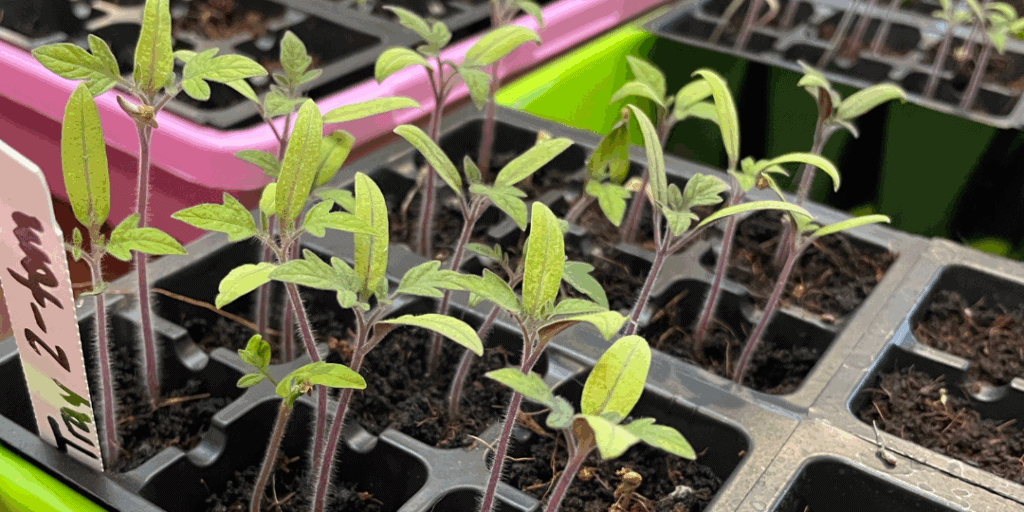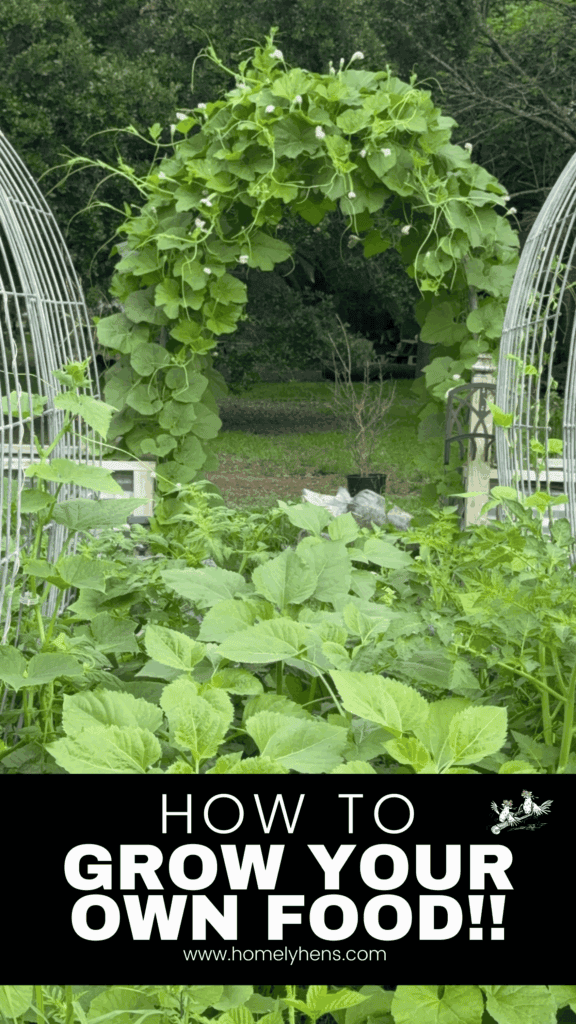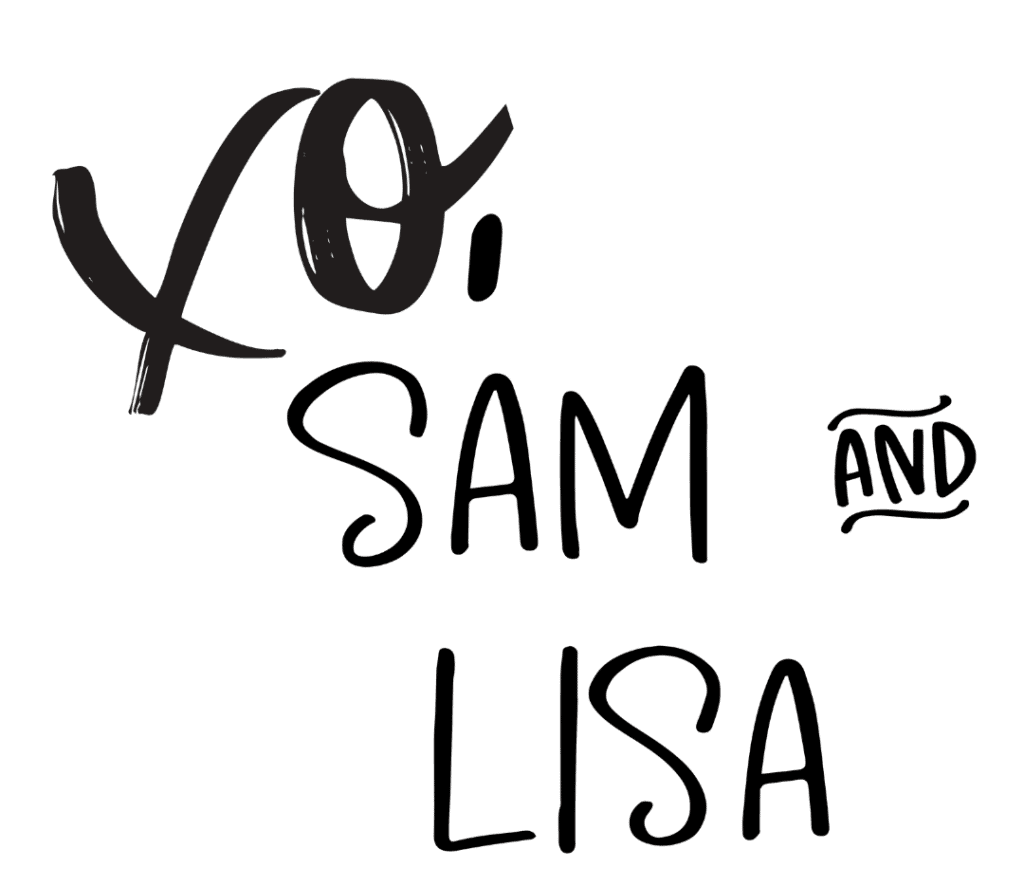How to Grow Food and Start a Productive Garden at Home
Learning how to grow food and start a productive garden at home is one of the best ways to become more self-reliant. If you have ever dreamed of growing your own vegetables, gathering your own fresh herbs for a meal, harvesting fruit right outside your door, or having beautiful flowers to fill your yard, you have come to the right place. Gardening doesn’t have to be complicated or expensive.
Gardening at home is one of the best ways to help you eat healthy while making the most of the space you have. It is a natural and rewarding hobby that the whole family can benefit from.

This post contains affiliate links. This will not cost you anything but will help us offset the cost of running the blog. We only share products we use and would recommend to a friend. Thank you for your support! Click ‘HERE’ for more info.
Start Here – Gardening Basics for Every Homestead
Before you plant your first seed, it helps to step back and look at the bigger picture. Building a garden at home isn’t just about soil and seeds. Those are huge parts, but it starts with good planning. If you are not sure where to begin, our Plan Your Homestead guide walks you through how to plan out your space, shows you how to track the sun’s path, and decide where your garden, coop, and other essentials should go.
Once you have your layout in mind, the next step is to find your growing zone, pick easy crops to start with that do well in your area, and get a feel for what your soil needs.
Find Plants that Thrive in Your Zone and When to Plant Them
One of the smartest ways to set your garden up for success is to choose plants that grow well in your area and know the best time to get them in the ground. County extension offices, local agriculture colleges, local nurseries, and even seasoned gardeners in your community can offer advice, and if you are lucky, printed PDFs on the best varieties for your zone. These resources carry region-specific plants and can give you dates on when to start plants indoors, start them from seeds outdoors, or when to transplant your seedlings.

Growing Vegetables in Your Backyard Garden
Growing vegetables in your backyard garden is one of the most rewarding ways to feed your family and reduce your grocery bill. I am always so amazed at how many meals just my tomatoes contribute to, let alone all the other plants I grow. It doesn’t matter what type of bed you are growing in; vegetables like tomatoes, cucumbers, zucchini, and leafy greens are perfect for beginners and seasoned gardeners alike.
A well-tended plant can produce more than you think, especially when you grow what your family already eats. You don’t have to do everything all at once. Start out with a few easy-to-grow vegetables. Choose the plants that grow well in your zone. Pay attention to sun exposure and soil health, and you will be harvesting fresh produce straight from your backyard in no time!
Click on any veggie below to get our tips and tricks for growing it:
- How to Plant Turmeric – Grow fresh turmeric at home.
- More coming soon
Is your garden cranking out the goods? Don’t let them go to waste. Check out our food preservation guides. Learn how to can, pickle, and stash all the extra food to feed you throughout the year.
Best Vegetables for Beginners
Are you starting vegetables for the first time? These beginner-friendly vegetables are super easy to grow. They forgive you when you make mistakes, and they are fun and rewarding when it comes to the harvest. It doesn’t matter if you are growing in a raised bed, a container, or a backyard plot; these plants are easy to grow and will help you gain the confidence you need to grow your food.
- Radishes – Super fast growers (ready in ~30 days!) and perfect for small spaces.
- Lettuce – Grows quickly, loves cool weather, and you can harvest leaves as needed.
- Green Beans (Bush Variety) – Productive, easy, and require little to no support.
- Zucchini (or Summer Squash) – Almost foolproof and incredibly prolific.
- Carrots – Just plant and thin. Great for kids to grow and harvest.
- Spinach – Grows fast in spring and fall and thrives in cooler temps.
- Cucumbers – Great producers; go for bush types if you’re tight on space.
- Tomatoes (Cherry or Determinate types) – Choose disease-resistant varieties for easier success.
- Peas – Sweet and simple to grow in spring and fall with a small trellis.
- Beets – Easy to grow, and you get edible greens too!
- Kale – Cold-hardy and keeps producing even after light frosts.
- Swiss Chard – Gorgeous, hardy, and cut-and-come-again friendly.
Tips for a High-Yield Garden
Wanting to make the most out of our space is always at the forefront of every homesteader’s mind. It doesn’t matter if you are working in a small backyard or have a few acres to spare. These tips will help you whether you are planting a backyard plot or a few raised beds.
- Plant in full sun – Most vegetables need 6–8 hours of sunlight daily.
- Improve your soil – Feed with compost and organic matter for strong, healthy plants.
- Water deeply and consistently – Encourages deeper roots and better resilience.
- Use succession planting – Replant fast-growing crops for a steady harvest.
- Grow upward – Use trellises for vining crops like cucumbers or beans.
- Mulch generously – Keeps soil cool, reduces weeds, and retains moisture.
- Choose high-yield varieties – Go with prolific producers like zucchini and cherry tomatoes.
- Watch for pests – Spot-treat issues early and rotate crops each season.

Our Favorite Gardening Tools & Supplies
Having the right tools makes managing your garden easier, more productive, and brings simplicity to the tasks that keep a garden thriving.
Must-Have Gardening Tools
Having the right tools on hand makes every gardening task easier. From planting and pruning to harvesting and hauling. These are the go-to essentials I reach for season after season. Whether you’re starting your first raised bed or managing a full backyard garden, these tools will save you time, effort, and a few sore muscles.
- Gardening Shears – Prune your herbs, vegetables, and fruit trees easily.
- Garden Boots – If you live in a wet area, these help you do what you need to do without tracking mud in the house.
- Heavy-Duty Garden Gloves – Great for weeding, pruning, and digging without destroying your hands.
- Soil Test Kit – Helps you figure out what your soil needs before planting.
- Irrigation System – Helps keep your plants watered evenly and saves you time.
- Irrigation Timer – Set it and forget it. These can work with a huge irrigation system or a small sprinkler.
- Stainless Steel Watering Wand – Saves your back and delivers a gentle soak right where you need it.
- Organic Pest Control – My favorite is BT for Caterpillar and Webworm Control. But this is an organic pest control for almost every pest in your garden.
- Hula Hoe – This is my favorite tool! It clears weeds in the garden fast and effectively.
- Harvesting Bucket – This large Bucket straps over your shoulders, which makes it easy to carry while you pick fruit and veggies.
- Hand Tool Set – A sturdy garden tool set makes planting, weeding, and harvesting easier from day one.
- Broad Fork – Easily aerate and loosen your soil during the planting season.
Seed Starting & Indoor Gardening
Having the right tools, like a shelf to grow them on with dedicated lights, a fan blowing to mimic the wind, and a heat mat to help warm the soil for plants like peppers, will take your garden to the next level. Learn to start seeds indoors is the best way to get the most out of your garden. Give your plants a chance to grow and become strong before they make their way to the garden.
Check out our page where we share our Favorite Seed Starting Tools for more ideas.
- Pots and Containers – Great for small spaces, container gardening, or starting herbs on the patio.
- LED Grow Lights – Boost seedling success with indoor lighting that mimics sunlight.
- Trays and Flats – Ideal for seed starting—keeps things organized and easy to water from the bottom of the pots.

Herbs and Flowers to Grow for Beauty and Usefulness
Adding herbs and flowers to your garden isn’t just about aesthetics. However, the blooms are beautiful and are one of my favorite parts of the garden. These plants can be used for companion planting; they bring pollinators to your garden, and many of them can be used medicinally. A lot of them are great for preserving (drying, infusing, or storing for later use). This makes them both practical and beautiful. They are perfect for any homestead!
Even when you are just starting, adding just a few well-chosen herbs or useful blooms can make a big impact. Some soothe your skin, some repel pests, and others bring the bees to your garden. They all earn their keep.
An example would be Growing Loofahs; they are not just a fun vine. They turn into natural sponges that you can actually use!
If you are planning on preserving herbs or making your own teas, tinctures, or salves from your flowers, check out our guides on how to dehydrate herbs and flowers over in our Food Preservation pillar. We walk you through how to dry what you grow and store it for year-round use.

How to Grow Fruits and Berries at Home
There is something so satisfying about harvesting your own fresh fruits and berries right from your backyard. Whether you are planting a single vine or planning out a small orchard, growing your fruit lets you pick your own variety, gives you the most flavorful fruits you have ever tasted, and is such a rewarding season when you are getting to make jams and jellies from all the overflow when you can’t eat if fast enough.
Start with easy-to-maintain crops like blackberries, grapes, and strawberries. You will be so amazed at all you can grow even in a small space when you plan it out properly.
Want to grow even more in your backyard? Learn How to Propagate Grapes, fig trees, and berries for free. There are many varieties of plants that you can grow from a simple cutting.
Monthly Gardening Tasks and To-Do Lists
Gardens change with the seasons. Staying on top of all the monthly tasks helps keep you on top of things before they get out of control and become overwhelming. It also helps boost your yields when you tackle simple schedules like seed starting, planting, watering, and deterring pests. While every zone is a little different, most gardens benefit from a simple rhythm of care.
- Early in the Year – Focus on planning, seed starting, and soil prep.
- Spring and Summer – This is the time for planting, watering, and pest control.
- Late Summer and Fall – This is the prime time for harvesting, preserving, and cleaning up.
- Winter – This time is ideal for reviewing your garden, successes, and prepping for next season.
We will soon be adding a month-by-month checklist to help you stay on track, so check back soon or join our emails for updates.

Garden Care and Techniques That Make a Difference
As your garden grows, these techniques will help you get better yields with less guesswork:
- Companion Plants for Tomatoes – Boost growth and reduce pests.
- How to Shop Your Gardening Zone – Pick plants that thrive locally.
- How to Start a Small Garden – Easy steps for any space.
- How to Make Seed Starting Mix – DIY mix for strong seedlings.
- Starting Seeds Indoors (Timeline for Zone 5) – When and what to start.
- How to Save Carrot Seeds – Save seeds for next season.
- How to Make a Compost Bin with Hardware Cloth – Quick, low-cost compost bin.
- How to Transplant Tomatoes into the Garden – Move tomatoes the right way.
- How to Split and Transplant Irises – Every 3-4 years, your irises need to be split up!
Explore More on Gardening and Growing Food
Looking to dive deeper? Each subcategory below focuses on a specific area of gardening, so you can grow smarter, harvest more, and troubleshoot with confidence.
- Herbs and Flowers
- Vegetable Gardening
- Fruits and Berries
- Monthly Gardening Tasks
- Garden Care and Techniques

Frequently Asked Questions About Gardening at Home
That depends on your growing zone, but generally, spring and fall are the most productive times. Use your local frost dates and sun exposure to guide your planting schedule.
Most vegetables need 6-8 hours of full sun per day. Leafy greens can get by with a bit less, but fruiting crops like tomatoes and peppers need plenty of sun.
A deep soak 2-3 times a week is better than daily surface watering. Weather, soil type, and plant maturity all play a role. Check your soil moisture regularly.
Yes, healthy soil is key. Homemade compost, well-rotted manure, or organic fertilizers will all help boost nutrients and plant growth.
Absolutely! Many vegetables thrive in containers or raised beds. Just make sure they get enough sun and good-quality soil. Yes – that means you can even grow them on an apartment balcony.
The best thing about gardening is the impact it has on your family. It brings everyone outside, helps you grow healthier food, and teaches the value of hard work. It’s time well spent together—and that’s something you can’t buy at the store.
Ready to Start Your Garden Journey?
Don’t stop here. Use the links above to dive deeper into any area of gardening. Whether you’re figuring out where to plant your first tomato plant or save seeds from your carrots, we’ve got step-by-step posts to guide you.
Want garden tips sent right to your inbox? Join our email list and get seasonal tips, free printables, and behind-the-scenes from Homely Hens.



